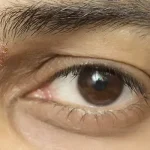Table of Contents
- Understanding the Macula: What Exactly Is the Macula?
- What Is a Macular Hole?
- What Is Macular Degeneration?
- Key Differences Between Macular Holes and Macular Degeneration
- Diagnosis: How Are They Detected?
- Treatment Options: Macular Holes vs Macular Degeneration
- Can They Be Prevented or Delayed?
- When to See a Doctor
- Protecting Your Vision for the Future
- Frequently Asked Questions
When it comes to vision problems that disrupt the center of your sight, two conditions often get confused: macular holes and macular degeneration. While these conditions both affect the macula, the tiny yet crucial part of your retina, they are entirely different and require specific treatments. Understanding these distinctions can make all the difference when it comes to protecting your vision.
Understanding the Macula: What Exactly Is the Macula?
Think of the macula as the tiny powerhouse of your eye. It’s located in the center of your retina and is only about 5 millimeters wide. Despite its size, the macula handles your sharp, detailed central vision. That’s the kind of vision you rely on for reading, driving, recognizing faces, or even threading a needle.
The macula houses millions of light-sensitive photoreceptor cells, particularly cone cells that help you see fine details and distinguish colors. When this integral part of your eye is functioning well, you can clearly see the world around you—but when something goes wrong with your macula, it can affect your quality of life in profound ways.
What Is a Macular Hole?
A macular hole is exactly what it sounds like: a small break or tear in the macula’s tissue. Picture it as a tiny hole punched through the center of your retina. This often happens due to the natural aging process when the vitreous gel in your eye shrinks and starts pulling on the retina.
The symptoms can sneak up on you. Over time, you may notice blurry or distorted central vision, a small gray or dark spot right in the middle of your visual field, or difficulty with tasks that require detailed focus, like reading. The good news? Macular holes usually only affect one eye, though in rare cases, both eyes can get involved.
Most macular holes occur in people over 60, and women are slightly more likely to experience them than men. Left untreated, the issue may worsen, but timely treatment can make a big difference!
What Is Macular Degeneration?
Macular degeneration is a whole different story. It’s an age-related condition (also called AMD) in which the macula gradually deteriorates over time. Instead of a sudden hole forming, macular degeneration unfolds slowly as the macular tissue breaks down.
There are two main types:
- Dry AMD (affects 85-90% of cases): This is the slower-moving form, where deposits called drusen build up under the retina, causing gradual breakdown.
- Wet AMD (less common but more serious): This occurs when abnormal blood vessels grow under the retina, leaking fluid or blood that rapidly damages central vision.
Symptoms can include straight lines appearing wavy, losing your ability to see in dim light, or developing blurry or blank spots in your central vision. Unlike macular holes, AMD tends to affect both eyes, though one eye may be worse than the other.
Key Differences Between Macular Holes and Macular Degeneration
It’s easy to confuse these two conditions, but understanding their differences can help you seek the right care:
- Cause: Macular holes are caused by mechanical forces, like the vitreous gel pulling on the retina. AMD results from gradual wear and tear of the macula with age.
- Onset: A macular hole can develop suddenly or slowly, while macular degeneration is much more gradual (except for wet AMD, which can progress quickly).
- Vision Impact: Macular holes create a dark or gray central spot, while AMD often causes distorted lines or a growing central blind spot.
- Eye Involvement: Macular holes typically affect one eye, but AMD usually involves both, often at different stages.
- Treatment Options: Surgery can often repair a macular hole, while AMD is managed with lifestyle changes, supplements, or injections—but it can’t be cured.
Diagnosis: How Are They Detected?
Both conditions of Macular Hole and Macular Degeneration need to be diagnosed by an eye care professional. Some common tools you’ll encounter include:
- Optical Coherence Tomography (OCT) for detailed images of the retina.
- Dilated Eye Exams to give your doctor a clear view of the back of your eye.
- Amsler Grid Tests, where you check for distorted or missing lines.
- Fluorescein Angiography, used for wet AMD to spot abnormal blood vessels.
Treatment Options: Treating Macular Holes vs. Macular Degeneration
The treatment paths for these conditions diverge quite a bit:
For Macular Holes, surgery is the gold standard. A procedure called vitrectomy removes the vitreous gel and places a gas bubble in the eye to help close the hole. The challenging part? Recovery often involves keeping your head face-down for several days to encourage healing. With prompt surgery, many patients regain much of their lost vision.
For Macular Degeneration, treatment varies by type:
- Dry AMD is managed through healthy lifestyle habits like eating leafy greens, taking AREDS2 supplements, and protecting your eyes from UV rays.
- Wet AMD requires anti-VEGF injections to reduce fluid leakage and abnormal blood vessel growth. These are often combined with lifestyle changes to slow progression.
- Low-vision aids and adaptive tools can be game changers for those with advanced AMD, helping them maintain independence.
Can They Be Prevented or Delayed?
While you can’t completely avoid these issues, certain steps can lower your risk:
- Schedule Regular Eye Exams, especially if you’re over 50.
- Manage your overall health by keeping blood pressure, cholesterol, and blood sugar levels in check.
- Protect your eyes with UV-blocking sunglasses.
- Eat a diet rich in leafy greens, colorful fruits, and omega-3 fatty acids.
- Quit smoking, as it’s a major risk factor for AMD.
When to See a Doctor
Don’t ignore sudden changes in your vision. If lines start to look wavy, you notice a dark spot in your field of vision, or your vision becomes blurry, it’s time to see an eye specialist. Early diagnosis can make a huge difference in treatment outcomes.
Protecting Your Vision for the Future
While both macular holes and macular degeneration affect the same critical part of the eye, they’re distinct conditions with unique solutions. Macular holes are often treatable with surgery that can restore vision, while macular degeneration requires careful long-term management and adaptation.
The key takeaway? Early detection and intervention matter. Keep an eye on your eye health by scheduling regular checkups, staying proactive about any symptoms, and leading a lifestyle that supports your vision. Remember, your eyesight is precious, and taking small steps today could protect it for years to come.





